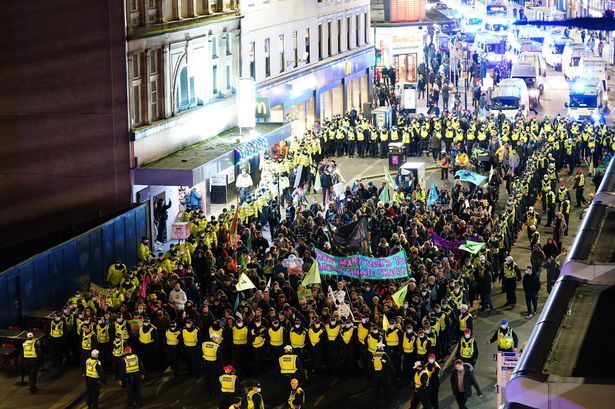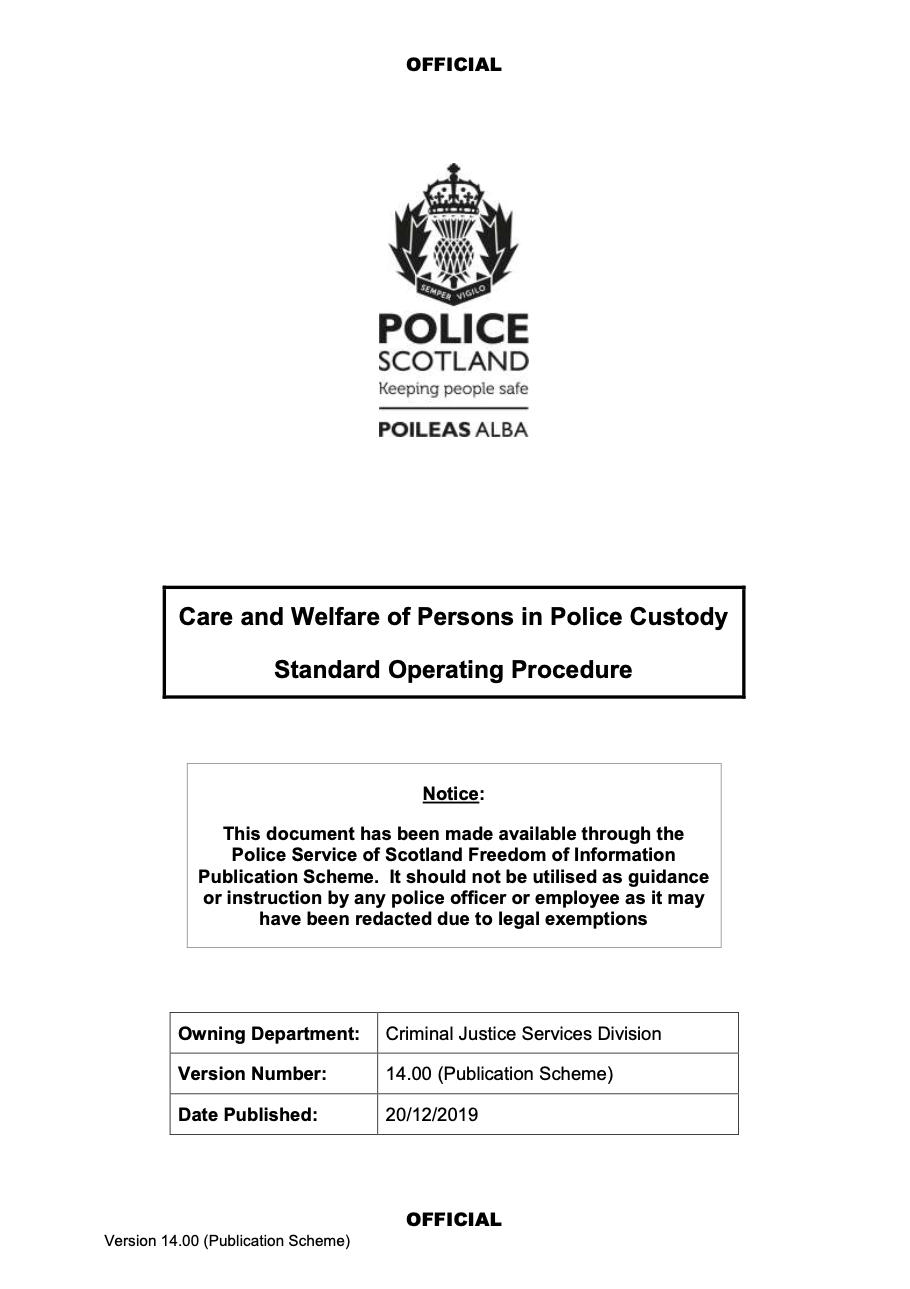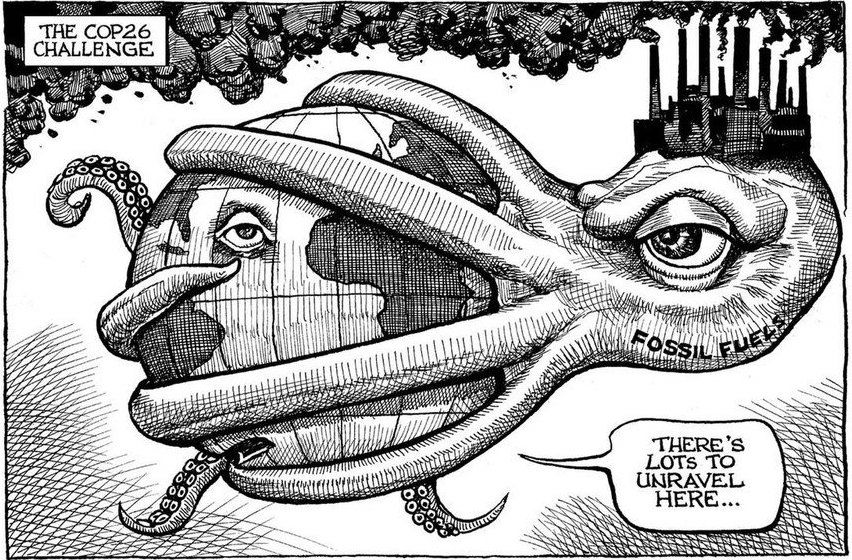Policing protests in Glasgow

Greenwash March, 3 Nov: More officers than marchers


Last week I volunteered in Glasgow as a Legal Observer for the COP26 protests. I was joined on the street by MSPs Paul McLennan (SNP) and Monica Lennon (Lab) and invited to report my observations on the policing.
Dear Paul and Monica
We met in St Vincent St in Glasgow on Wed 3 Nov, when you saw the police ‘kettling’ demonstrators. I was serving as a Legal Observer (LO) for the Scottish Community & Activist Legal Project (SCALP). We three shared our disquiet at what we saw, and you asked nearby police commanders what they were doing, and why.
We had not met before. I live in North London, and chair the Neighbourhood Forum of our wealthy suburb. My father was a long-serving Conservative councillor in Hampshire. My mother hails from Dundee, but our clan lands were close to Glasgow. Our clan’s name, Lamont, derives from a Middle Scots word meaning “law man”.
You invited my personal observations on the policing of events in Glasgow. What follows is entirely personal and in no way represents the views of SCALP. (SCALP is preparing its own report on the policing; you will get copies.)
I served as a Legal Observer at the Greenwash March on 3 Nov, the march to BAe on 4 Nov, and the big Justice March on 6 Nov. I also attended rallies in George Square on 5 and 7 Nov.
The good news first. I observed the entire BAe march on 4 Nov, from assembly to dispersal. Officers were cheerful, courteous and gave the 2-400 marchers comfortable space. They screened the march from traffic along the route. The march was peaceful, and the police protected BAe from possible intrusion and facilitated peaceful protest.
The Justice March of 100,000 people on 6 Nov was too big for a single observer to summarise. My buddy and I followed Block 9, the faith groups. Unsurprisingly, Quakers, Buddhists and Christians marched peacefully and, so far as we saw, so too did the cyclists and Scottish Nationalists who followed them. (The massed St Andrew’s crosses streaming in the wind were a brave sight.) We saw only a dozen or so officers between Kelvingrove Park and the bridge where St Vincent St crosses the M8.
There at 14:50 the march stopped for some time. Officers were posted along the bridge. When we reached Holland St we found it blocked by a solid line of about 30 officers. At the top of the hill another solid line of officers appeared to be part of a ‘kettle’ surrounding perhaps 20 or more marchers carrying red flags. As the rest of the marchers filed past along St Vincent St, a group of about a dozen people carrying IWW flags chanted “Let them go!” at 30 officers blocking Holland St. The situation remained unchanged when I left at 16:20.
In summary, we saw about a hundred officers deployed at the intersection of Holland and St Vincent Streets, with perhaps a dozen or so people shouting at them. The kettle had been formed before we arrived at 15:20 and was still in place an hour later.
Turn now to the Greenwash March of 3 Nov. This assembled on Buchanan St a little before noon. About 400 people turned up, observed by City of London officers standing by the Jed shopfront. There were speeches. Just before 1pm the samba band assembled on Sauchiehall St and the march formed up behind them. A line of British Transport Police officers blocked the intersection with first West Nile St, then Renfield St, stopping both marchers and shoppers from passing.
At 13:30 the march about-faced and turned down West Nile St, and followed a twisting route through the city centre, turning aside from police lines before winding up kettled about 14:50 in St Vincent St, where you found it.
A little beforehand I observed a disturbance. Following some kind of scuffle, officers seized two men and a banner. The banner appeared to read “Restrict our borders, not our boilers.” Officers restrained the men, spoke to them until the marchers had gone, then released them.
According to my notes you arrived at the kettle about 15:30. The police held the demonstrators in St Vincent St for a further two hours before inserting a column of officers along each flank, at which point the whole march moved forward, a few yards at a time, entirely surrounded by a wall of officers. In all this time, as you observed, the demonstrators remained peaceful and good-humoured. The samba band played and some people danced. I left my post by 18:00. A band member told me the march finally dispersed about 19:30. We LOs had expected it to finish 4-5 hours before that.
Several questions need answers.
What explains the marked difference between the policing of the marches on 3 and 4 Nov?
A “static assembly” in Scotland requires no notifications; a march or procession must be notified to the relevant city or local council.
The BAe march on 4 Nov had a known destination and route, perhaps advised well in advance. The policing was a model of what we should want to see, facilitating peaceful protest.
The Greenwash March on 3 Nov began as a static assembly. Police were few and stayed back from the crowd and the speeches on the Galleries steps. When the crowd formed up to march, British Transport Police officers appeared and blocked the intersection with West Nile St, then fell back to Renfield St. An officer approached some of us Legal Observers and asked politely for a destination so that the march could be policed. We did not know the destination. He asked if we could pass his request on to the organisers; we did not know who they were; we could not help him.
Had the route of the Greenwash March been advised in advance, it might perhaps have been policed as peacefully as the BAe March was. Instead, aggressive tactics imprisoned demonstrators between walls of yellow-jacketed officers.
As far as I saw, individual officers were generally relaxed and good humoured. LO protocol minimises interaction with the police, but I overheard officers compare Extinction Rebellion demonstrators favourably with football crowds, commenting that they appreciated not having fireworks thrown at them. An English officer remarked that it was good to be out walking; his experience of the deployment had previously been “a lot of big men in vans”. I also overheard officers commenting that the samba band was keeping everyone in good spirits.
In short, aggressive police tactics (I emphasise I did not witness aggression by individual officers) cannot be explained as a response to aggression by demonstrators.
Other possible explanations include:
- property values in central Glasgow are higher than in Govan
- a march in central Glasgow has greater potential for “serious disturbance to the community” (part of the definition of a Breach of the Peace)
We shall return to these possibilities when considering what the aggressive police tactics might have achieved.
Was the change in policing proportionate to that difference?
It is evident that the change in police tactics was not a response to aggression by demonstrators. Whatever their commanders might have thought, officers on the front line were clear that the demonstrations were peaceful.
Why do the protesters distrust the police?
Police Scotland announced in advance that its policing of the demonstrations planned for COP26 would be fair and respectful. Its code word for the policing operation was the Gaelic word for respect. Why would protesters not trust them?
To understand this, consider the experience of the movement in England. Protestors have been systematically harassed, “pre-emptive” arrests made, peaceful demonstrators filmed for databases, and groups infiltrated by undercover officers.


At the kettle
Monica’s film shows a part of the police kettle in St Vincent St, and also a young man who returned again and again to the line of officers, filming protestors over their shoulders.
Organising a march exposes a person to serious liabilities. There are substantial disincentives to identifying oneself as a march organiser.
Not declaring an itinerary is not compelling evidence of aggressive intent.
What did aggressive policing achieve?
Kettling is a serious, and contentious, violation of our right to go about our lawful business undisturbed. It erases a key distinction: am I under arrest, or am I free to go? Police commanders assume a power not granted by government: to detain without charge.

Police Scotland Standard Operating Procedures, 20/12/2019
The care and welfare of individuals in police custody is paramount. Police Officers/Police Staff should be aware that failure to adhere to procedures may compromise prisoner care and potentially may render them liable to disciplinary, misconduct, civil or criminal proceedings.
— Standard Operating Procedures, §1.5
Many of the demonstrators in Glasgow had travelled far at their own expense to encourage and support the COP26 participants. Officers imprisoned them on the streets for hours without food, water, or access to toilets. We observed water distributed to officers. Where were the custody plans required by Police Scotland’s own Standard Operating Procedures?
It is hard to maintain that the kettle was required to protect property. If there was risk to property, the kettle increased it. We LOs expected the march to disperse by 3pm. The police kept demonstrators in the central business district for hours lomger, and risked exhausting their goodwill. Little here to please shopkeepers.
Similarly for disturbance to the community: if the event depressed commerce, police action that extended it by hours made the disturbance worse.
Commanders can claim they kept the demonstrators away from the COP26 conference site. But that did not require a kettle in the city centre. The conference site is well protected and guarded.
The cost of aggression
Aggressive police tactics are perhaps better understood as street theatre: to demonstrate that commanders are in control, and that the extraordinary deployment of officers and equipment from all over the kingdom is warranted. The cost of this must be understood not only in overtime and the thousand-pounds-an-hour it takes to keep a helicopter in the air, but in damage to the integrity, legitimacy, and public trust in both our politics and in the role of the police.
Scots fought long and hard for power devolved from Westminster, and the independence referendum revealed an engagement with politics that the English can only envy and admire. The demonisation of dissent is poison in the water table of Scottish politics.
The rapidly accelerating environmental catastrophe is the biggest political issue of our time. Our political system plainly struggles to come to grips with it. People ask whether democracy can handle the job. The governing party appears to be funded by polluters, and insouciant about their influence.

The Economist, 29 Oct 2021

Baroness Jenny Jones of the Green Party is listed on a UK police database as a “domestic extremist”.
Views such as these once seemed radical. No longer. They appear now in bastions of the business press. The Economist and Extinction Rebellion both charge governments with inaction and complacency. Yet Westminster recklessly conflates dissent with “radicalisation”, “extremism”, and terrorism.
Glaswegians should be too canny to fall for such blether – and Scotland’s parliament might reasonably object to its police force being used to undermine democracy. While you made it clear that MSPs are not involved in operational matters, Holyrood might wish to consider whether there are any conditions in which it will now tolerate kettles on the streets of Scotland.
Yours aye
Stephen Taylor, FRSA

